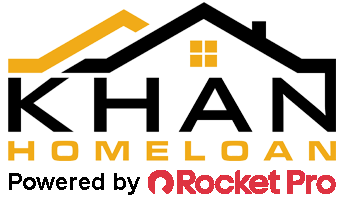VA Home Loans USA: A Pathway to Affordable Homeownership for Veterans
1. Introduction to VA Home Loans USA
For veterans, active-duty service members, and eligible surviving spouses, buying a home can be made easier with the help of VA loans. These government-backed loans provide numerous benefits over traditional mortgages, including no down payment, lower interest rates, and more lenient credit requirements. VA home loans USA are a way to thank military personnel for their service by offering an affordable path to homeownership, and they have helped millions of Americans secure their dream homes.
In this guide, we’ll explore the ins and outs of VA home loans USA, including the key features, eligibility criteria, and the advantages that set them apart from other mortgage options.
2. What Are VA Home Loans USA?
VA home loans are mortgage loans offered through a program established by the United States Department of Veterans Affairs. These loans are available to qualifying veterans, active-duty service members, and eligible surviving spouses. What makes these loans unique is that the government guarantees a portion of the loan, reducing the risk for lenders and enabling them to offer more favorable terms to borrowers.
3. Key Benefits of VA Home Loans USA
a) No Down Payment Required
Perhaps the most attractive feature of VA loans is the ability to finance 100% of the home’s value without needing a down payment. This is a significant advantage for buyers who may not have enough savings for a traditional down payment, which often ranges from 5% to 20% of the home’s value.
b) Competitive Interest Rates
Because these loans are backed by the federal government, lenders can offer competitive interest rates, often lower than conventional mortgage rates. Over the life of the loan, this can save borrowers thousands of dollars in interest payments.
c) No Private Mortgage Insurance (PMI)
Unlike conventional loans where borrowers must pay for private mortgage insurance if their down payment is less than 20%, VA home loans USA do not require PMI. This helps to lower the overall cost of the mortgage, making monthly payments more affordable for borrowers.
d) Lenient Credit Requirements
VA loans are more forgiving when it comes to credit scores. While many conventional lenders require a credit score of 620 or higher, VA loans can sometimes be secured with a lower score, depending on the lender’s specific requirements.
e) Limited Closing Costs
VA loan regulations also limit the amount borrowers can be charged in closing costs, which can help to reduce the upfront expenses associated with buying a home.
f) Flexible Options for Refinancing
VA loans offer flexible refinancing options, such as the VA Interest Rate Reduction Refinance Loan (IRRRL), also known as a VA Streamline Refinance. This program allows borrowers to refinance their existing VA loan to a lower interest rate with reduced paperwork and fewer out-of-pocket costs.
4. Who Qualifies for VA Home Loans USA?
VA home loans are exclusively available to veterans, active-duty service members, and certain surviving spouses. To be eligible, applicants must meet specific service requirements, which generally include:
- Active-Duty Service: Generally, at least 90 consecutive days of active service during wartime or 181 days during peacetime.
- National Guard and Reserve Members: Typically, at least six years of service.
- Surviving Spouses: Spouses of service members who died in the line of duty or due to a service-related injury may also qualify.
In addition to service eligibility, borrowers must meet certain financial requirements, including sufficient income and a satisfactory credit history, though the credit standards are often less stringent than those for conventional loans.
5. Types of VA Home Loans USA
VA loans come in several forms, tailored to meet different financial needs:
a) VA Purchase Loans
The most common type of VA loan is the purchase loan, which helps veterans and service members buy a home. This loan can be used for the purchase of a single-family home, a condo in a VA-approved project, or even new construction.
b) VA Interest Rate Reduction Refinance Loan (IRRRL)
Also known as the VA Streamline Refinance, the IRRRL allows veterans with existing VA loans to refinance to a lower interest rate with reduced paperwork and fewer upfront costs. This is a great option for those looking to reduce their monthly payments or switch from an adjustable-rate mortgage (ARM) to a fixed-rate loan.
c) VA Cash-Out Refinance Loan
A cash-out refinance loan allows homeowners to take cash out of their home’s equity by refinancing their current mortgage. This option can be used to pay off debt, fund home improvements, or cover other financial needs.
d) Native American Direct Loan (NADL)
The NADL program helps Native American veterans purchase, build, or improve a home on federal trust land. This type of VA loan comes with additional perks like no down payment, no private mortgage insurance, and low-interest rates.
6. VA Home Loans USA Process: Step by Step
If you’re ready to explore VA home loans USA, here’s a step-by-step breakdown of the process to help guide you through the journey.
a) Obtain Your Certificate of Eligibility (COE)
The first step in securing a VA loan is to obtain a Certificate of Eligibility (COE), which verifies that you meet the necessary service requirements. You can request a COE through the VA’s eBenefits portal, your lender, or by mailing a completed VA Form 26-1880.
b) Choose a VA-Approved Lender
Not all lenders offer VA loans, so it’s essential to find a lender who specializes in them. VA-approved lenders are familiar with the unique requirements of VA loans and can guide you through the process.
c) Get Pre-Approved
Once you’ve chosen a lender, you’ll want to get pre-approved for your loan. Pre-approval involves submitting documentation related to your income, credit history, and service record. This step helps you determine how much you can borrow and demonstrates to sellers that you are a serious buyer.
d) Find a VA-Approved Home
The property you purchase must meet VA standards for safety and habitability. Work with your real estate agent to find a home that meets these requirements
e) Apply for the Loan
After selecting your home, your lender will help you complete the loan application and schedule an appraisal to ensure the property meets the VA’s minimum property standards
f) Close on Your Loan
Once your loan is approved, you’ll proceed to closing. At closing, you’ll sign the necessary paperwork, pay closing costs (if applicable), and take ownership of your new home
7. VA Home Loans USA vs. Conventional Loans
When deciding between VA loans and conventional loans, there are several factors to consider:
a) Down Payment
Unlike conventional loans, VA loans do not require a down payment, which is a significant advantage for many buyers.
b) Interest Rates
VA loans typically have lower interest rates than conventional loans due to the government guarantee.
c) Mortgage Insurance
As previously mentioned, VA loans do not require private mortgage insurance, even with no down payment. Conventional loans with less than 20% down usually require PMI, which can add to your monthly payment.
d) Credit Flexibility
VA loans are generally more lenient with credit scores than conventional loans, making them a viable option for borrowers with lower credit.
e) Loan Limits
While conventional loans have higher limits in high-cost areas, VA loans typically have no maximum loan amount as long as you qualify for the loan and the property meets VA standards.
8. Challenges of VA Home Loans USA
While VA loans offer numerous benefits, there are some potential challenges to consider:
a) Funding Fee
While VA loans don’t require a down payment or PMI, most borrowers will need to pay a VA funding fee. This fee helps fund the VA loan program and can vary based on your loan type, down payment, and whether you’ve used a VA loan before. However, the fee can be rolled into the loan amount, and some veterans with service-related disabilities may be exempt.
b) VA Appraisal Process
VA appraisals can be more stringent than conventional appraisals. The VA requires homes to meet specific standards for safety and habitability, which can delay the loan process or require repairs before closing.
9. How to Make the Most of VA Home Loans USA
To maximize the benefits of VA loans, keep these tips in mind:
a) Improve Your Credit
Although VA loans have more lenient credit requirements, improving your credit score can help you qualify for even better interest rates.
b) Shop Around for Lenders
VA loan rates and fees vary between lenders, so take the time to compare offers from multiple VA-approved lenders to ensure you get the best terms.
c) Consider Refinancing
If interest rates drop, refinancing your VA loan could save you money on your monthly payments. The VA Streamline Refinance program makes it easy to lower your rate with minimal paperwork.
10. Conclusion: VA Home Loans USA – A Great Option for Veterans
VA home loans USA provide veterans, active-duty service members, and eligible surviving spouses with a powerful tool to achieve homeownership. With no down payment, competitive rates, and no PMI, these loans offer significant advantages over conventional loans. While there are some challenges, such as the VA funding fee and appraisal process, the benefits often far outweigh the drawbacks. If you qualify, VA home loans USA can be an excellent option for purchasing or refinancing your home.
By understanding how VA loans work and how to navigate the process, you can take full advantage of the benefits that come with serving our country.

